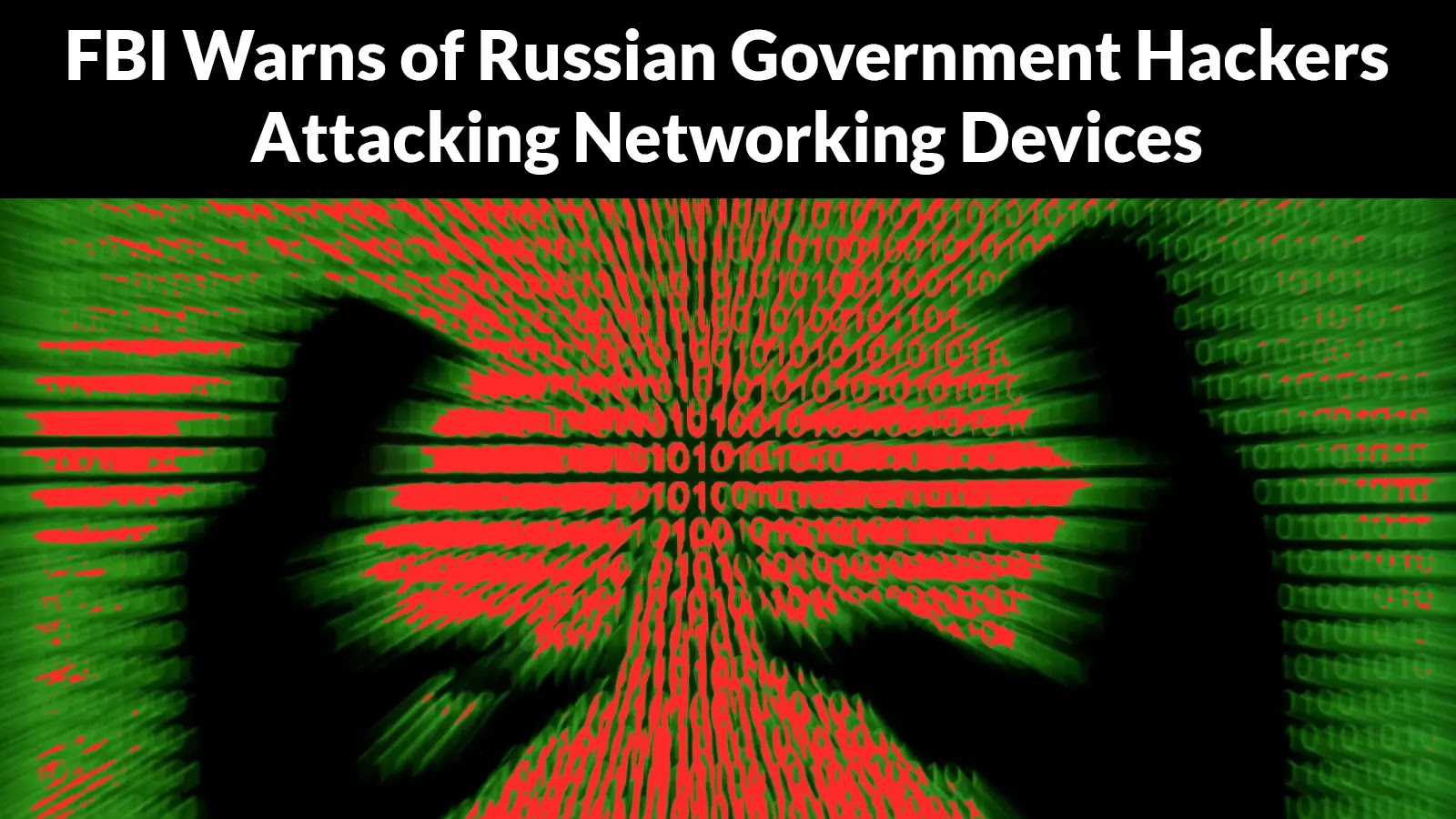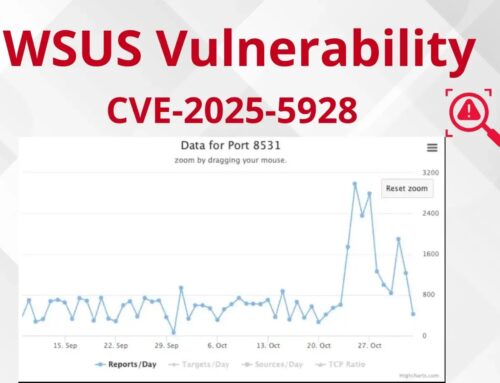
FBI Warns of Russian Government Hackers Attacking Networking Devices of Critical Infrastructure
FBI Warns: Russian Government Hackers Targeting Critical Networking Infrastructure
The digital defenses of critical infrastructure are under a sophisticated and sustained assault. The Federal Bureau of Investigation (FBI) has issued a critical cybersecurity alert, warning of active campaigns by Russian government-backed hackers, specifically the Federal Security Service (FSB) Center 16. Their primary objective: exploiting vulnerabilities in networking devices to infiltrate vital systems across the United States and globally. This isn’t just another cyberattack; it’s a calculated, state-sponsored effort to disrupt and compromise foundational networks.
As cybersecurity professionals, understanding the tactics, techniques, and procedures (TTPs) of these advanced persistent threats (APTs) is paramount. This advisory highlights a significant escalation in intelligence-gathering and potential disruptive capabilities aimed at the very backbone of our infrastructure.
The Threat Actor: Russia’s FSB Center 16
The FBI’s warning identifies the Russian Federal Security Service (FSB) Center 16 as the perpetrator. This group is known for its advanced cyber espionage and disruptive operations. Their current focus on networking infrastructure demonstrates a strategic shift to gain deep access into target environments, likely for reconnaissance, data exfiltration, or laying groundwork for future kinetic effects. The targeting of networking devices such as routers, firewalls, and VPN concentrators offers a highly privileged vantage point, often bypassing traditional perimeter defenses.
Targeting Vectors: Exploiting Networking Device Vulnerabilities
The core of this threat lies in the exploitation of known vulnerabilities within networking devices. While the FBI alert doesn’t enumerate specific CVEs in its public summary, common targets for such state-sponsored groups include:
- Vulnerabilities in VPN solutions (e.g., Pulse Secure, Fortinet, Palo Alto Networks)
- Exploitable flaws in firewalls (e.g., Cisco ASA, Palo Alto PAN-OS)
- Weaknesses in network management protocols or unpatched operating systems of routers and switches.
These exploits allow attackers to establish persistent access, move laterally within networks, and ultimately reach critical infrastructure systems. The lack of patching and proper security configuration on these perimeter devices creates significant entry points for malicious actors.
Impact on Critical Infrastructure Systems
Critical infrastructure encompasses sectors vital to a nation’s functioning and security, including energy, water, telecommunications, financial services, and transportation. Compromise of these systems can lead to severe consequences:
- Disruption of Services: Outages in power grids, water supply, or communication networks.
- Data Theft: Exfiltration of sensitive operational data, intellectual property, or confidential information.
- Operational Sabotage: Manipulation of industrial control systems (ICS) and supervisory control and data acquisition (SCADA) systems, leading to physical damage or widespread disruption.
- Espionage: Long-term intelligence gathering to inform future strategic operations.
The calculated approach mentioned by the FBI suggests a well-resourced and patient adversary, capable of maintaining access for extended periods.
Remediation Actions and Proactive Defenses
In response to this elevated threat, organizations, particularly those operating critical infrastructure, must adopt a proactive and layered defense strategy. Immediate attention to networking device security is paramount.
Essential Remediation Steps:
- Patch Management: Implement a rigorous and timely patch management program for all networking devices. Prioritize critical and high-severity vulnerabilities. Regularly check vendor advisories. For instance, maintain vigilance for updates related to common VPN and firewall products.
- Device Hardening: Follow vendor best practices for securing networking equipment. Disable unnecessary services and ports. Use strong, unique passwords and multi-factor authentication (MFA) for all administrative interfaces.
- Network Segmentation: Segment networks to limit lateral movement. Critical infrastructure operational technology (OT) networks should be isolated from corporate IT networks with robust firewalls and access controls.
- Monitoring and Logging: Implement comprehensive logging on all networking devices and feed logs into a Security Information and Event Management (SIEM) system. Monitor for unusual activity, unauthorized access attempts, and configuration changes.
- Intrusion Detection/Prevention Systems (IDS/IPS): Deploy IDS/IPS appliances designed to detect and block known malicious traffic patterns and exploitation attempts targeting networking protocols.
- Zero Trust Architecture: Begin implementing Zero Trust principles, moving away from implicit trust to explicit verification for every access attempt, regardless of origin.
- Regular Audits and Penetration Testing: Conduct frequent security audits and external/internal penetration tests on networking infrastructure to identify weaknesses before adversaries do.
- Incident Response Plan: Develop and regularly test a comprehensive incident response plan specifically for network compromises. Ensure clear communication channels and roles.
Relevant Tools for Detection and Mitigation:
| Tool Name | Purpose | Link |
|---|---|---|
| Nmap | Network discovery and port scanning | https://nmap.org/ |
| Wireshark | Network protocol analyzer for traffic inspection | https://www.wireshark.org/ |
| Snort | Network intrusion detection system | https://www.snort.org/ |
| Splunk (or other SIEM) | Log aggregation, analysis, and threat detection | https://www.splunk.com/ |
| Vulnerability Scanners (e.g., Nessus, OpenVAS) | Automated vulnerability identification in network devices and applications | https://www.tenable.com/products/nessus / https://www.greenbone.net/en/community-edition/ |
Conclusion: An Ongoing Battle for Cyber Resilience
The FBI’s alert underscores the persistent and evolving threat landscape facing critical infrastructure. Russian government hackers are actively leveraging vulnerabilities in networking devices as a primary vector for infiltration. For cybersecurity professionals, this serves as a potent reminder of the critical importance of foundational security practices: robust patch management, stringent configuration hardening, comprehensive monitoring, and proactive vulnerability assessments. Building cyber resilience is not a one-time project, but an ongoing commitment to staying ahead of sophisticated adversaries determined to exploit any weakness.





